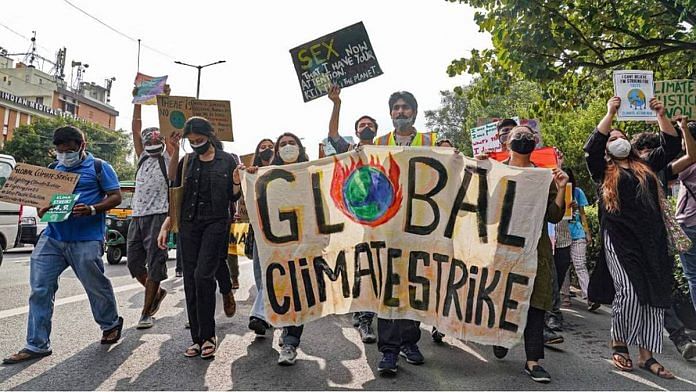New Delhi: The extent of global warming today means despite ambitious investments in climate adaptation, certain impacts due to climate change cannot be avoided and the ensuing losses and damages “must be addressed adequately” at the upcoming COP27 climate summit in Egypt’s Sharm El-Sheikh this month, the United Nations (UN) has said.
According to the UN’s ‘Adaptation Gap’ report released Thursday, countries will struggle to adapt to rising temperatures if the deployment of adaptation strategies is not hastened. Climate adaptation refers to adjustments in ecological, social, or economic systems in response to the present and future impacts of climate change.
Citing the multi-year drought in the Horn of Africa, flooding in South Asia, and severe summer heat and record-breaking droughts across multiple regions of the northern hemisphere this year, the report stated that “without a step change in financial support, adaptation actions could be outstripped by accelerating climate impacts, which would further widen the adaptation implementation gap”.
This also means that losses and damages arising from climate change “cannot be avoided”, the report added. Loss and damage occur when ecosystems and communities can no longer adapt to the changing climate.
Loss-and-damage finance is likely to be a flash point at the COP27, the lead up to which has seen low-and-middle-income countries demand climate reparations from their richer counterparts, who are historically more responsible for today’s global warming. Developed countries have opposed setting up a loss and damage fund, and the matter has not made its way to the official agenda of the COP27.
According to the UN report, the costs of adapting to climate change “are in the range of US$160–340 billion by 2030 and US$315–565 billion by 2050″. This is five to ten times higher than actual climate finance flows towards adaptation, the report added. At present, developing countries have recieved only US$28.6 billion in adaptation finance, said the report.
“The world must urgently reduce greenhouse gas emissions to limit the impacts of climate change. But we must also urgently increase efforts to adapt to the impacts that are already here and those to come,” said Inger Andersen, executive director of the UN Environment Programme, in a statement Thursday.
Also read: Nearly 90% of Jan-Sept days saw extreme weather events in some part of India, says new report
Action does not address future climate change
The UN’s report on adaptation is the latest in a series on the state of climate change.
Last week, the UN found that the latest pledges by countries to mitigate climate change were “nowhere near” enough, and that the difference between projected reductions in carbon emissions and the emissions reductions needed to limit global warming to 1.5 degrees above pre-industrial levels is 23 gigatonnes.
In 2015, countries from across the world had made an international treaty on climate change, known as the Paris Agreement, which agreed to limit global warming to “well below” 2 degrees Celsius by the end of the century, to avoid climate catastrophe. According to the latest available scientific evidence, global warming is already at 1.1 degrees above pre-industrial levels.
Current policies and pledges have put the world on track to achieving between 2.3 and 2.6 degrees of warming, a state that will put thousands of species at risk of extinction and change ecosystems irreversibly.
The latest report notes that while at least 84 per cent of countries have “established adaptation plans, strategies, laws and policies”, action is often incremental and does not typically address future climate change. Most actions are geared towards agriculture and water ecosystems that primarily address drought, flooding and rainfall variability, the report said.
Some of the failures of these actions to adequately cover climate risks lie with the fact that they exclude marginalised groups and involve the capture of resources by elite groups. They also fail when development activities are touted as climate adaptive, “without specifically addressing climate risks, often resulting in marginal resilience benefits or maladaptation,” said the report.
Actions can be widened in scope if they include more genuine stakeholders and are combined with mitigation efforts, such as hydropower reducing food security.
“investment in local capabilities, capacity-building and democratic governance structures in support of climate risk management,” can also help improve adaptive capacity, the report added.
(Edited by Poulomi Banerjee)
Also read: Armed with science & tech solutions, govt & IIT-Delhi come together to fight air pollution



